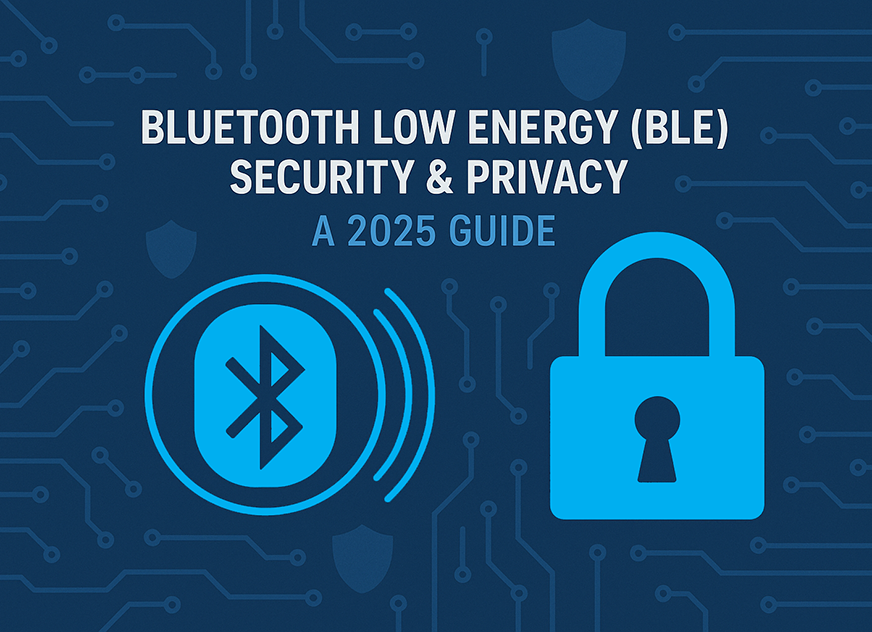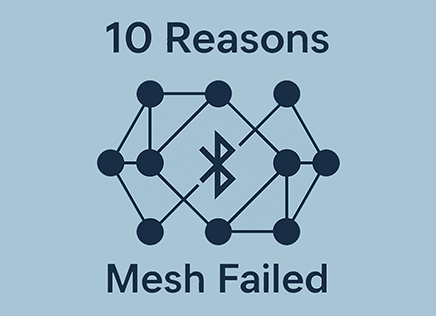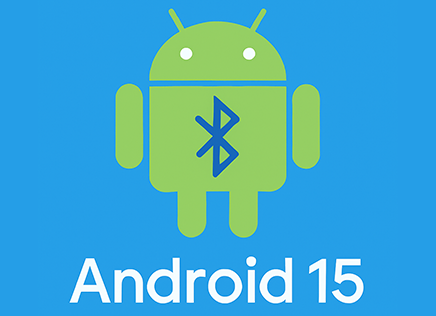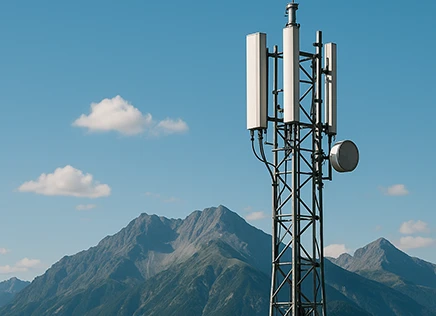
What’s IoT Connectivity?
IoT connectivity refers to the methods and technologies that allow Internet of Things (IoT) devices—such as sensors, smart appliances, and industrial machines—to connect to networks, cloud services, and each other. It enables the seamless transmission of data between devices and systems, allowing for remote monitoring, control, and automation.
IoT connectivity can be achieved through a variety of wireless and wired technologies, including Wi-Fi, Bluetooth, cellular networks (like LTE-M and NB-IoT), LoRaWAN, Ethernet, and satellite links. The choice of connectivity depends on factors like range, power consumption, data speed, and environmental conditions, making it a critical component in the design of scalable and reliable IoT solutions.
Some of the leading IoT Connectivity Technologies
- 3G/4G/5G
- NB-IoT and LTE CAT-M1
- Satellite Communications
- Bluetooth
- LoRa and LoRAWAN
- Wi-Fi including Wi-Fi HaLoW
- Sub-1GHz including WiSUN
Cellular technologies like LTE-M, NB-IoT, and 5G are designed for wide-area IoT connectivity, offering the ability to connect devices over long distances without relying on local network infrastructure. They are ideal for mobile or remote applications such as asset tracking, smart meters, and environmental monitoring.
In contrast, short-range technologies like Wi-Fi, Bluetooth Low Energy (BLE), Zigbee, and Thread are optimized for lower power consumption, lower cost, and high device density in smaller, localized environments like homes, offices, and factories.
While cellular networks provide broader coverage and greater independence, they often come with higher costs and power requirements compared to short-range solutions, which are better suited for battery-powered devices and mesh networks where proximity enables efficient communication. The choice between cellular and short-range depends heavily on the application’s range, energy, and scalability needs.
With this in mind let’s talk about some of the factors that makes you choose one technology over another.
Data Rate and Throughput
Throughput determines how quickly devices can send or receive data. Use cases like video monitoring, firmware updates, or real-time analytics require higher throughput, while others like sensor data collection or asset tracking are comfortable with lower rates.
Factors influencing throughput needs:
- Application type (e.g., video stream vs. simple temperature readings)
- Network environment (urban, rural, indoor, outdoor)
- Device power constraints (battery-powered vs. plugged-in)
- Latency tolerance (real-time vs. delayed reporting)
Choosing a connectivity technology that matches the throughput needs of your IoT application is critical for efficient, reliable operation.
| Connectivity Technology | Typical Throughput | Notes |
|---|---|---|
| Bluetooth Low Energy (BLE 5.0) | ~1–2 Mbps | Optimized for short-range, low-power communication. |
| Wi-Fi (802.11n/802.11ac) | 50–500 Mbps | High throughput, best for bandwidth-heavy local IoT. |
| Zigbee | ~250 kbps | Low-power, low-throughput mesh network. |
| LoRaWAN | ~0.3–50 kbps | Very low throughput, designed for long-range, battery-efficient applications. |
| Sub-1GHz | 1.2 kbps – ~250kbps | Low throughput, designed for long-range, battery-efficient applications. |
| NB-IoT (Narrowband IoT) | ~20–250 kbps | Low-speed cellular IoT, optimized for wide-area low-power deployments. |
| LTE-M (Cat-M1) | ~200–1000 kbps | Higher cellular IoT throughput for mobile or voice applications. |
| 5G IoT (eMBB mode) | 100 Mbps–1 Gbps+ | Extremely high throughput; still emerging in many IoT sectors. |
| Sigfox | ~100 bps | Ultra-low throughput, very limited payload size. |
Latency in IoT
Low latency can be critical depending on the use case:
- Real-time Control: Robotics, industrial automation, and autonomous vehicles require extremely low latencies to ensure immediate response and safety.
- Monitoring and Alerts: Applications like healthcare monitoring need relatively low latency to promptly detect and respond to critical conditions.
- Periodic Reporting: Smart meters and environmental sensors can tolerate high latency, as their primary task is to report data at intervals rather than in real time.
- User Experience: Smart home devices and wearables benefit from low latency to feel responsive to users, improving satisfaction and usability.
Here’s how some common IoT connectivity options compare:
- Wi-Fi:
Offers relatively low latency (typically 1–10 ms on local networks), making it excellent for real-time applications like security cameras, voice assistants, and home automation. - Bluetooth Low Energy (BLE):
BLE has slightly higher latency than Wi-Fi (5–50 ms) but is very power efficient. It is ideal for wearables, health devices, and indoor positioning systems where quick response times are important but not critical. - Cellular (LTE-M, NB-IoT, 5G):
LTE-M supports moderate latencies (50–100 ms), suitable for mobile health monitoring and fleet tracking. NB-IoT prioritizes power saving over speed, resulting in higher latencies (up to several seconds), which are acceptable for non-time-sensitive applications like smart meters. 5G, particularly its URLLC (Ultra-Reliable Low-Latency Communications) mode, aims to deliver latencies below 1 ms, unlocking real-time control use cases like autonomous vehicles and industrial automation. - LoRaWAN:
LoRaWAN is designed for low-power, long-range communication, but it has relatively high latency (hundreds of milliseconds to several seconds or even minutes). It’s ideal for sensor networks and agriculture where occasional data reporting is sufficient and the data does not change significantly. - Satellite IoT:
Satellite connections have the highest latencies (typically 600–900 ms or more) due to the long distances signals must travel. They are best suited for remote tracking, environmental sensing, and low-priority data reporting.
Reducing IoT Latency
To address latency challenges, developers and system architects can:
- Choose the right connectivity technology based on application needs.
- Use edge computing to process data locally instead of always sending it to the cloud.
- Optimize protocols by using lightweight alternatives like UDP or CoAP where possible.
- Prioritize network traffic with Quality of Service (QoS) techniques to ensure critical IoT messages are transmitted with minimal delay.
Power Consumption and why it Matters
When designing Internet of Things (IoT) systems, power consumption is one of the most critical factors to consider—often as important as connectivity range, data rate, and latency. Many IoT devices run on batteries or energy harvesting systems, and how they connect to the network can dramatically impact their lifespan, size, and maintenance needs. Understanding how different IoT connectivity technologies consume power helps engineers and developers make smarter decisions tailored to their application requirements.
Power consumption affects everything from a device’s battery life to its physical size, cost, and environmental sustainability. Devices deployed in remote or difficult-to-access areas—such as agricultural sensors, wildlife trackers, and industrial monitors—may need to operate for years without human intervention. Frequent battery replacements can be expensive, labor-intensive, and sometimes simply impractical.
Connectivity is often one of the largest energy drains, especially for wireless devices. Every transmission and reception consumes power, and staying connected (even when idle) can also use significant energy depending on the protocol and network design.
Here’s how major IoT connectivity technologies compare in terms of typical power consumption:
- Wi-Fi
Wi-Fi is power-hungry compared to other wireless options. Constantly maintaining a Wi-Fi connection consumes significant energy, making it a poor choice for battery-powered IoT unless paired with aggressive sleep strategies. It’s best suited for devices with mains power or short-term operations. - Bluetooth Low Energy (BLE)
BLE is designed specifically for low-power operation. Devices can spend most of their time in a sleep state, waking up only briefly to transmit or receive data. BLE is ideal for wearables, health monitors, and smart home devices where low energy use is crucial. - Cellular (LTE-M, NB-IoT, 5G)
Cellular IoT offers broad coverage but at a cost. Traditional 4G LTE consumes a lot of power, but IoT-optimized standards like LTE-M and NB-IoT significantly reduce energy demands. NB-IoT, in particular, supports features like Power Saving Mode (PSM) and Extended Discontinuous Reception (eDRX), allowing devices to sleep for hours or even days between communications, enabling multi-year battery life. - LoRaWAN
LoRaWAN is extremely power-efficient, especially when transmitting small, infrequent packets. Devices can be designed to wake up only when needed, making it a strong choice for sensors and trackers expected to run for years on a small battery. - Zigbee and Thread
Both Zigbee and Thread are low-power mesh network technologies. Devices can sleep and periodically check for messages, balancing responsiveness and battery conservation. However, routers (devices that relay messages for others) typically require continuous power. - Satellite IoT
Satellite communication is extremely energy-intensive due to the long distances and power needed for uplink. Battery-powered satellite IoT devices often have very limited transmission schedules (e.g., once a day) to conserve energy.
Key Techniques for Managing IoT Power Consumption
Regardless of the technology, several strategies can minimize power consumption:
- Duty Cycling: Design devices to sleep most of the time and only wake when necessary.
- Efficient Protocols: Use lightweight communication protocols like CoAP or MQTT-SN that minimize data overhead.
- Batching Data: Instead of transmitting data frequently, buffer and send data in bursts to reduce the number of radio activations.
- Smart Network Features: Take advantage of power-saving modes like PSM and eDRX (in cellular) or adaptive data rates (in LoRaWAN).
- Edge Processing: Analyze and filter data locally, sending only essential information to the cloud.
Choosing the Right Connectivity Based on Power Needs
Choosing the right connectivity method involves balancing power against other system needs like range, data rate, latency, and cost. Here’s a quick rule of thumb:
| Application Type | Recommended Connectivity | Notes |
|---|---|---|
| Battery-powered wearables | BLE, Sub-1GHz | Ultra-low energy, small payloads |
| Remote environmental sensors | LoRaWAN, NB-IoT | Long range, infrequent transmissions |
| Smart home automation | Thread, Zigbee | Low power mesh networking |
| Mobile asset tracking | LTE-M | Good balance of coverage and moderate power |
| High-data devices (e.g., cameras) | Wi-Fi, 5G | Requires mains power or frequent recharging |
Choosing the Right Connectivity Technology for IoT
Connectivity is the lifeline of the Internet of Things (IoT). Whether you’re building a smart thermostat, deploying an agricultural sensor network, or designing an industrial automation system, the choice of connectivity technology can determine whether a project succeeds or struggles. With dozens of options available—from Wi-Fi and Bluetooth to LoRaWAN, cellular, and satellite—selecting the right communication method isn’t just a technical detail; it’s a strategic decision that impacts performance, cost, scalability, and device longevity.
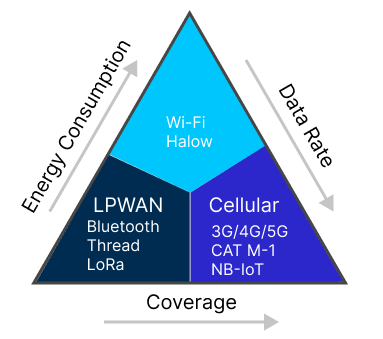
Why Connectivity Choice Matters
Every IoT application has unique requirements for range, data throughput, power consumption, latency, security, and operational costs. Connectivity technologies vary widely across these factors. Choosing an ill-suited technology can lead to unnecessary expenses, poor user experiences, reduced device lifespan, or even system failure. The “best” technology isn’t universal—it depends entirely on what the device needs to accomplish, where it will operate, and how often it must communicate.
Key Factors to Consider
When evaluating connectivity options, it’s critical to weigh:
- Range and Coverage – How far does the device need to communicate? For short distances indoors, Bluetooth or Zigbee might be ideal. For global tracking, cellular or satellite becomes necessary.
- Power Consumption – Is the device battery-powered? Technologies like BLE, NB-IoT, and LoRaWAN are optimized for energy efficiency, while Wi-Fi and traditional cellular networks tend to consume more power.
- Data Throughput – Does the device need to stream video or send tiny sensor readings every few hours? High-bandwidth applications require faster technologies like Wi-Fi or 5G, while small periodic messages suit LoRaWAN or NB-IoT.
- Latency Requirements – Does the system need real-time responsiveness? Applications like industrial robotics or autonomous vehicles may demand 5G’s ultra-low latency, while smart meters can tolerate higher delays.
- Network Availability and Infrastructure – Will the device operate in urban areas with existing networks or remote regions with sparse coverage? Some technologies, like LoRaWAN, allow private deployments where public networks are unavailable.
- Scalability – How many devices need to connect? Mesh technologies like Thread and Zigbee handle dense networks well, while cellular networks are designed for widespread, massive deployments.
- Cost – Beyond the module price, consider ongoing operational costs like SIM cards and data plans (for cellular) versus free local networks (for Wi-Fi or LoRaWAN).
- Future Proof – A strategic investment in an IoT ecosystem can be high both in terms of time and cost, and long term viability is critical to ensure that investment lasts
- Global Interoperability – IoT deployments can be done worldwide, which means compliance with regulatory
- Security – Security has become mandatory for every device deployment to protect against attackers
- Mobility – Many applications require tracking and are mobile, but not every IoT connectivity technology can do
- Total Cost of Ownership – the total cost to operate is always a critical factor in any technology. Cellular solutions provide mobility and independence, but also add device subscription fees
Common Connectivity Technologies and Their Ideal Uses
| Connectivity | Best For | Key Strengths |
|---|---|---|
| Wi-Fi | Smart home, cameras | High throughput, widespread availability |
| Bluetooth Low Energy (BLE) | Wearables, health devices | Ultra-low power, short-range |
| LTE-M / NB-IoT | Asset tracking, smart meters | Wide coverage, battery optimization |
| LoRaWAN | Environmental sensors, agriculture | Long range, low data rate, private networks |
| Zigbee / Thread | Home automation, lighting systems | Low power, mesh networking |
| 5G | Industrial automation, autonomous vehicles | Ultra-fast, low latency |
| Satellite IoT | Maritime, remote monitoring | Global reach |
Real-World Impact of the Right (or Wrong) Choice
Choosing the wrong connectivity can lead to serious issues:
- Battery life could fall far short of expectations, requiring frequent and costly replacements.
- Connectivity gaps could disrupt critical operations if the device moves outside network coverage and communications are intermitent
- Higher-than-expected costs could emerge from data overages, unexpected roaming charges, or maintenance expenses.
- User dissatisfaction could arise from delays, dropped connections, or limited functionality.
On the flip side, a well-chosen connectivity solution leads to longer device life, lower operating costs, smoother performance, and better user adoption.
Summary
No single IoT Technology can cover all applications and use cases. Choosing the right IoT Connectivity technology ultimately depends on the specific needs of the application — whether it’s prioritizing low power consumption, high data throughput, wide-area coverage, or cost efficiency.
Short-range technologies like Bluetooth and Wi-Fi excel in local environments with high data demands, while LPWAN options such as LoRaWAN and NB-IoT are better suited for low-power, long-distance communication.
Cellular networks offer broad coverage and reliability for mobile or large-scale deployments but often at higher power and cost trade-offs. By carefully balancing these factors against project requirements, developers can ensure optimal performance, longevity, and scalability for their IoT solutions.





